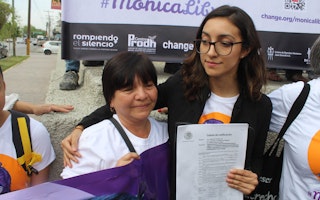Q&A: Inside the Campaign to Close Rikers

On April 1, New York City Mayor Bill de Blasio announced his determination to shutter Rikers Island, the jail complex notorious for the long history of violence and abuse that has unfolded there. But for Herbert Sturz, senior advisor at the Open Society Foundations, it was a story more than 30 years in the making. Sturz spoke with us about the campaign to close Rikers and the challenges ahead.
How did the drive to close Rikers come about?
When I was with the Koch administration, we worked on trying to get the city to sell Rikers to New York State. The plan at the time was for the state to reserve the facilities for city residents convicted of serious felonies, and spare them the need to go to Attica upstate. The effort failed, and got put on the shelf for a long time.
Then Jennifer Gonnerman wrote her powerful piece in the New Yorker about Kalief Browder, who was held for three years on Rikers without trial on suspicion of having taken a backpack. It seemed like there might be an opportunity to try again.
What was the vehicle for building support for reform?
I met with our leadership at the Open Society Foundations, and we discussed how the moment might be ripe to try to close Rikers, given the bipartisan interest in reducing mass incarceration. We helped to support the creation of an independent commission to study the subject, which was convened by New York City Council Speaker Melissa Mark-Viverito.
How did the commission work?
I was honored to join the Independent Commission on New York City Criminal Justice and Incarceration Reform, along with Ken Zimmerman, director of Open Society’s U.S. Programs, and Darren Walker from the Ford Foundation, as well as a number of distinguished criminal justice experts from academia and the advocacy field and leaders from business and real estate.
The Vera Institute of Justice, the Center for Court Innovations, and the City University of New York’s State and Local Governance group all played key roles in providing the data and specific policy proposals that were debated and integrated into the final report. We were most fortunate to have as our leader the Honorable Jonathan Lippman, who served as chief judge of the New York Court of Appeals until 2015.
The group broke into committees and held hearings around the state, looking at how this idea could be processed, where the population might be diverted, and what would happen to the land currently occupied by the correctional facility, among other issues. Under Judge Lippman’s leadership, the commission was able to produce a report in just over a year. It was a lot of people coming together. [Editor’s note: Read the full report, entitled A More Just New York City.]
The mayor was previously against this idea. What do you think turned the tide?
Kalief Browder’s story was crucial. The New Yorker piece on what happened to him helped humanize the problem. The New York Times wrote good editorials on the subject (the New York Post was against it). Glenn Martin, the leader of JustLeadershipUSA, who was himself formerly incarcerated and has been working effectively on this issue for a long time, played an especially important and creative role both as a member of the commission and in rallying community support—organizing meetings, influencing the administration, applying public pressure, but giving the political process room to work.
City Council Speaker Mark-Viverito and the progressive caucus on the council stepped up. And Judge Lippman drove the whole thing. You have to give Mayor de Blasio credit—he saw more information, saw the momentum swing behind this idea, and lent his support. His continued backing will be critical to the successful implementation of the initiative.
So what happens next?
Well, we need to help the city find the money to help draw down the Rikers population. Perhaps philanthropy can play a modest role going forward. The commission plan calls for a series of small jails to be built in each borough. I believe we can bring the population down faster than some think. We should get the women out first. There is a lot of momentum now, and a lot of organizations working to reduce incarceration.
The plan is to make smaller jails in the boroughs, near the courthouses, so families can visit, so it doesn’t take all day to go to an island. With smaller jails, you can have fewer guards, easing the tensions inside. It’s the opposite of mass incarceration. It’s decarceration. Shorter stays are also a key part of this. Further court reform is needed, so people move through the system more quickly, and don’t languish in such terrible places for long periods of time. And the island could host a new runway for LaGuardia Airport.
Rikers has been a poster child for everything that is bad about the corrections system for 85 years. This move will reverberate, if the city can pull it off. There will be pressures on the mayor and council members heading into an election year, and continued support from those leaders, and families of the incarcerated, will be critical. If they stand firm, I would hope there could be a ripple effect in prison policy more broadly.


